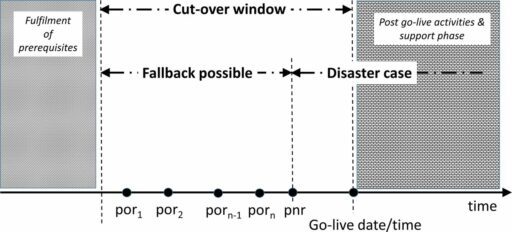Table of Contents
In this comprehensive guide, we delve into the intricacies of PostgreSQL data types, exploring their properties, use cases, and how to effectively manipulate them for optimal database performance. From strings and numerics to arrays and full-text search capabilities, this guide covers the essentials of PostgreSQL’s powerful data handling features. We also compare PostgreSQL’s data types with those of other SQL databases, discuss its unique indexing options, and reveal how to choose the right SQL variant to ensure data integrity and robust functionality.
Key Takeaways
- Understand the properties and characteristics of PostgreSQL data types such as strings, numerics, and arrays, and how to retrieve database information efficiently.
- Learn about PostgreSQL’s strict typing and data integrity measures, and compare its data handling capabilities with other SQL databases.
- Discover essential PostgreSQL functions for data manipulation and how to use built-in functions to transform and process data effectively.
- Explore PostgreSQL’s extensibility features, including support for procedural languages, locale-awareness, and advanced indexing options for performance optimization.
- Gain insights into PostgreSQL’s full-text search capabilities and how to leverage its unique indexing types like B-tree, hash, GiST, and BRIN for query workload efficiency.
Overview of Common Data Types

Understanding Strings, Numerics, and Arrays
In PostgreSQL, strings, numerics, and arrays represent the foundational data types that cater to a variety of data representation needs. Strings are used for text data and come in two main forms: VARCHAR for variable-length strings and TEXT for larger strings without a specific limit. Numerics encompass a range of types, from integers (INT) to floating-point numbers (FLOAT), allowing for precise numerical data storage.
Arrays in PostgreSQL are powerful, providing the ability to store multiple values of the same data type in a single column. They can be accessed and manipulated using a set of built-in functions and operators. Here’s a quick reference for some common array operations:
- Accessing array elements:
array[index] - Array concatenation:
array1 || array2 - Checking for element existence:
value = ANY(array)
When designing a database schema, it’s crucial to choose the appropriate data type for each column to ensure data integrity and optimize performance. PostgreSQL’s rich set of data types and functions allows for fine-grained control over how data is stored and retrieved.
Retrieving Database Information
Retrieving data from a PostgreSQL database is a critical skill for any developer or data analyst. Understanding the Data Query Language (DQL) is essential for extracting valuable insights from your data. DQL commands, such as SELECT, allow you to specify exactly what data you want to retrieve and how it should be processed.
To effectively retrieve data, consider the following steps:
- Identify the data you need from your database schema.
- Use appropriate DQL commands to craft your query.
- Implement robust error handling to deal with database-related exceptions.
- Optimize your queries for performance to ensure efficient execution.
Remember, the goal is not just to retrieve data, but to do so efficiently and accurately, minimizing the load on the database and the risk of errors.
Database extraction tools can also be utilized to connect to the DBMS and execute queries or use specialized connectors. These tools support various databases, including both SQL-based and NoSQL systems.
Characteristics of PostgreSQL Data Types
PostgreSQL’s data types are designed to be both flexible and precise, ensuring that data is stored in a way that maximizes both integrity and efficiency. Each data type in PostgreSQL is optimized for a specific kind of data, ranging from simple text and numerical types to more complex arrays and custom user-defined types.
- Character data types such as
character varying(n)andcharacter(n)allow for the storage of text, withcharacter varying(n)providing variable length andcharacter(n)ensuring fixed length. - Numerical data types cater to various precision requirements, from integers to floating-point numbers.
- Arrays can store multiple values in a single column, supporting complex data structures within the database.
PostgreSQL’s strict typing system is a key characteristic that contributes to its robust data integrity. When data does not match the expected type, PostgreSQL will not compromise on accuracy, instead, it will reject the data, preventing potential issues down the line. This strict approach to data typing is essential for maintaining the quality and consistency of the data stored within the database.
PostgreSQL’s extensibility allows for the creation of custom data types, which can be tailored to specific application needs, enhancing the database’s ability to handle diverse and changing data.
Choosing the Right SQL Variant

Strict Typing and Data Integrity in PostgreSQL
PostgreSQL’s commitment to strict typing is a cornerstone of its architecture, ensuring that data conforms precisely to predefined formats. This adherence to strict data integrity means that any attempt to insert data that does not match the specified data type will result in an error, preventing the corruption of data. This is particularly crucial for applications where consistency and reliability are paramount, such as financial systems or healthcare databases.
PostgreSQL’s strict typing system is not just about preventing errors; it’s about maintaining a high standard of data quality throughout the application’s lifecycle.
While some databases may offer more flexibility by autocorrecting or accepting unconventional data with a warning, PostgreSQL prioritizes accuracy and predictability. This approach may require more rigorous data validation at the input stage, but it pays dividends in the long run by guaranteeing no data loss and fostering a robust environment for data management.
Comparing PostgreSQL with Other SQL Databases
When evaluating PostgreSQL against other SQL databases, such as MySQL or MariaDB, it’s crucial to consider the unique features and limitations of each system. PostgreSQL is renowned for its advanced features and standards compliance, offering extensive support for complex data types and user-defined types. It also boasts a rich set of procedural languages and advanced indexing options, which can be pivotal for certain applications.
However, no database system is without its challenges. PostgreSQL, while powerful, may present hurdles in terms of certain performance aspects when compared to its counterparts. For instance, some users might find that PostgreSQL’s extensive feature set comes with a steeper learning curve or that certain operations are more resource-intensive.
It’s important to weigh the pros and cons of each database system in relation to the specific needs of your project or organization.
Here’s a quick comparison of some critical differences between PostgreSQL and MySQL, as highlighted by Kinsta:
- PostgreSQL offers a feature-rich, object-relational database model.
- MySQL is known for its simplicity and ease of use, which may be more suitable for less complex applications.
Choosing the right SQL variant involves a careful analysis of your data requirements, the scale of your project, and the long-term maintenance implications.
Handling Unconventional Data
When dealing with unconventional data, PostgreSQL’s strict typing system can be both a blessing and a curse. On one hand, it ensures data integrity by rejecting data that doesn’t conform to the expected format. On the other hand, it can pose challenges when integrating data that is less structured or doesn’t fit neatly into traditional SQL data types.
PostgreSQL’s robust extensions and support for multiple formats make it a versatile choice for handling a variety of data types, from structured to unstructured.
To accommodate such data, PostgreSQL offers several solutions:
- Use of data type modifiers to relax constraints where appropriate.
- Utilization of JSON and JSONB data types for semi-structured or unstructured data.
- Leveraging user-defined functions and custom data types for unique data handling requirements.
These features enable PostgreSQL to process and store a wide range of data formats, ensuring that businesses can make use of all the information they receive, regardless of its structure.
Functions for Manipulating Data in PostgreSQL
Essential PostgreSQL Functions for Data Processing
PostgreSQL is renowned for its robust set of functions that facilitate complex data processing tasks. These functions are crucial for transforming and manipulating data to meet the needs of various applications. For instance, PostgreSQL provides an extensive collection of aggregate functions, which are essential for data analysis and reporting. Functions like AVG(), COUNT(), SUM(), and MAX() allow users to perform fundamental aggregation operations efficiently.
PostgreSQL’s ability to handle complex data types and user-defined types, along with its advanced indexing options, makes it a powerful tool for data analysis.
To effectively utilize these functions, one must understand their syntax and application. Here’s a list of common data processing functions and their uses:
LENGTH(string): Returns the length of the specified string.SUBSTRING(string FROM pattern): Extracts a substring matching the pattern.TRIM(string): Removes the leading, trailing, or both leading and trailing whitespace from the string.COALESCE(value1, value2, ...): Returns the first non-null value in the list.
By mastering these functions, users can perform a wide range of data manipulations, from simple string trimming to complex full-text searches.
Transforming Data with Built-in Functions
PostgreSQL offers a rich set of built-in functions that allow for complex data transformations directly within the database. These functions are essential for tasks such as data cleaning, normalization, and conversion between data types. For example, the to_char function can format dates and numbers into strings, while array_agg can transform rows of data into an array.
to_char(timestamp, 'YYYY-MM-DD HH24:MI:SS')– Formats a timestamp as a string.array_agg(expression)– Aggregates values into an array.string_agg(expression, delimiter)– Concatenates strings using a delimiter.to_json(expression)– Converts a row or value into a JSON object.
Data transformation is not just about changing the format; it’s about enhancing the data’s usability and preparing it for analysis or reporting. Proper use of these functions can significantly reduce the need for external processing, making data handling more efficient and less error-prone.
Leveraging Full-Text Search Capabilities
PostgreSQL’s full-text search is a robust feature that allows for efficient indexing and searching of text data within your database. It provides a powerful tool for matching keywords and phrases in large documents or collections of text. This capability is essential for applications that require quick retrieval of relevant information from a corpus of text.
To utilize full-text search, PostgreSQL offers several functions and operators. For example, the to_tsvector function converts a text into a ‘tsvector’, a sorted list of distinct lexemes, which is then indexed. The to_tsquery function, on the other hand, converts a query string into a ‘tsquery’ object that can be matched against a ‘tsvector’.
PostgreSQL extensions further enhance full-text search capabilities. By installing extensions such as pg_trgm or fuzzystrmatch, you can perform more complex searches, including trigram matching and fuzzy string comparisons.
Here is a simple workflow to set up a full-text search:
- Define a column with the
tsvectordata type. - Create an index on the
tsvectorcolumn. - Use the
to_tsvectorfunction to populate the column. - Perform searches using the
to_tsqueryfunction and the@@operator.
Remember, while full-text search is powerful, it’s also important to consider the performance implications of indexing and searching large datasets. Proper indexing strategies and query optimization can help maintain high performance.
Language and Syntax

Understanding PostgreSQL’s Procedural Languages
PostgreSQL extends beyond the capabilities of standard SQL with its rich set of procedural languages. PL/pgSQL, the primary procedural language of PostgreSQL, is designed to integrate tightly with SQL, allowing for sophisticated control structures such as loops and conditionals. This enables developers to create complex functions, triggers, and stored procedures, which can significantly enhance database functionality and automation.
In addition to PL/pgSQL, PostgreSQL supports other procedural languages, including PL/Python, each with its unique features and use cases. Here’s a brief overview of the procedural languages supported by PostgreSQL:
- PL/pgSQL: Offers full procedural control and seamless SQL integration.
- PL/Python: Allows embedding Python scripts for advanced data processing.
Procedural languages in PostgreSQL empower developers to build more dynamic and responsive database applications, providing the tools necessary for sophisticated data manipulation and business logic implementation.
The choice of procedural language can impact the performance and capabilities of your database applications. It’s important to select the language that best fits the requirements of your project, considering factors such as language familiarity, specific feature needs, and performance considerations.
Locale-Awareness and Case Sensitivity
PostgreSQL’s handling of text data is influenced by locale settings, which determine sorting and character classification behaviors. Case sensitivity, a crucial aspect of text comparison in PostgreSQL, can lead to different query results depending on whether the search is case-sensitive or not.
For instance, when comparing strings, ‘Data’ and ‘data’ are considered distinct unless a case-insensitive operation like ILIKE or LOWER() is used. This distinction is vital for ensuring data consistency and can impact the performance of queries and indexes.
- Use
ILIKEfor case-insensitive matching. - Apply
LOWER()to both sides of a comparison to normalize case. - Utilize
COLLATEto specify a particular sorting order.
Remember, the choice of text search configuration can significantly affect the search functionality, allowing for more precise control over sorting and comparison operations.
Extensions and Scalability Features
PostgreSQL’s extensibility is one of its most powerful features, allowing users to add new functions, data types, operators, and index types. Extensions can significantly enhance the database’s capabilities and adapt to specific use cases. For instance, the pg_trgm extension provides text search functionality by creating trigram indexes, while hstore offers key-value storage within a single PostgreSQL value.
Extensions are not only about adding new features but also about improving performance. The citus extension, for example, enables horizontal scaling by distributing data and queries across multiple servers. This can be crucial for applications that require high availability and real-time analytics.
PostgreSQL’s architecture is designed to be highly customizable, which is evident in its support for a wide range of extensions that cater to various needs, from spatial data processing with PostGIS to advanced time-series analysis with TimescaleDB.
To manage extensions effectively, PostgreSQL provides the CREATE EXTENSION, ALTER EXTENSION, and DROP EXTENSION commands. Below is a list of common extensions and their primary use cases:
PostGIS: Adds support for geographic objects to the PostgreSQL database.pgcrypto: Provides cryptographic functions.citus: Enables sharding and scaling out PostgreSQL databases.TimescaleDB: Turns PostgreSQL into a powerful time-series database.pg_trgm: Improves the speed of text searches.hstore: Allows the storage of sets of key/value pairs within a single PostgreSQL value.
Indexes and Performance Optimization

Unique Index Types and Their Uses
PostgreSQL stands out with its ability to offer a diverse array of unique index types tailored to optimize query performance for various workloads. These index types include B-tree, hash, GiST, SP-Gist, GIN, and BRIN. Each type serves a specific purpose, from handling simple equality checks to managing complex, multi-dimensional data structures.
Partial indexes, for instance, are not created for every row in a table but are instead tailored to the subset of rows that are most frequently accessed. This targeted approach can significantly enhance query speeds by focusing on high-activity or recent data.
The creation of indexes is straightforward in PostgreSQL, with commands such as CREATE INDEX idx_LastName ON Employees(LastName); allowing for quick setup. Moreover, PostgreSQL’s extensibility is evident in its catalog-driven operations, which maintain comprehensive information about database objects, including indexes.
It’s important to note that unique indexes are not just about preventing duplicate values; they can also be combined with other index types, like function-driven, partial, and covering indexes, to create a robust and efficient indexing strategy.
Function-Driven, Partial, and Covering Indexes
PostgreSQL’s indexing capabilities are designed to optimize query performance across a variety of workloads. Partial indexes, for instance, are not created for every row in a table but are instead tailored to the subset of rows that are most frequently accessed. This targeted approach can significantly enhance the speed of query execution for high-activity data segments.
In addition to partial indexes, PostgreSQL supports a range of unique index types, including B-tree, hash, GiST, SP-Gist, GIN, and BRIN. These index types are not mutually exclusive, allowing for a combination of function-driven, partial, and covering indexes to be used concurrently to match any query workload.
The extensibility of PostgreSQL is further highlighted by its catalog-driven operations, which maintain comprehensive information about database objects, including data types and access methods.
Here is a quick overview of the unique index types available in PostgreSQL:
- B-tree: Ideal for general-purpose indexing
- Hash: Suitable for equality comparisons
- GiST: Good for indexing geometric data and full-text search
- SP-Gist: Optimized for space-partitioned data
- GIN: Effective for indexing array and full-text search data
- BRIN: Best for large tables with naturally ordered data
Full-Text Indexing and Searching
PostgreSQL’s full-text search is a sophisticated feature that allows for efficient indexing and searching of text data within your database. It enables you to locate pertinent information swiftly within large text-based documents, making it an invaluable tool for applications that require comprehensive text analysis and retrieval capabilities.
The full-text search functionality in PostgreSQL is not limited to simple keyword matching. It incorporates various components such as dictionaries, parsers, and ranking algorithms to provide nuanced search results. This ensures that the search is contextually relevant and returns the most appropriate results.
PostgreSQL extensions can further enhance the full-text search capabilities. By utilizing these extensions, developers can tailor the search experience to suit specific needs and optimize performance for their particular use case.
Below is a list of key index types that PostgreSQL supports for full-text search:
- B-tree
- Hash
- GiST
- SP-Gist
- GIN
- BRIN
Each index type offers unique advantages depending on the query workload and the nature of the text data being indexed.
Conclusion
Throughout this comprehensive guide, we’ve explored the rich landscape of PostgreSQL data types, delving into the common types such as strings, numerics, and arrays, as well as the advanced features that make PostgreSQL a robust and extensible database system. We’ve seen how its strict typing enforces data integrity and how its extensive indexing options, including B-tree, hash, and GIN, among others, can optimize query performance. The guide has also highlighted PostgreSQL’s full-text search capabilities, procedural languages, and the powerful extensions that enhance its functionality. Whether you’re managing structured or unstructured data, PostgreSQL’s scalability and advanced features make it a formidable choice for developers seeking a reliable, open-source database platform. As we conclude, it’s clear that understanding PostgreSQL’s data types and their manipulation is crucial for leveraging the full potential of this versatile database system.
Frequently Asked Questions
What are the characteristics of PostgreSQL data types?
PostgreSQL data types are known for their strict typing, support for complex and user-defined types, and adherence to SQL standards. They ensure data integrity by rejecting unconventional data that doesn’t match the destination data type.
How does PostgreSQL handle indexing and query optimization?
PostgreSQL offers a wide array of indexing options including B-tree, hash, GiST, SP-Gist, GIN, and BRIN. It also supports advanced query optimization techniques, function-driven indexes, partial indexes, and covering indexes.
What procedural languages does PostgreSQL support?
PostgreSQL supports a rich set of procedural languages including PL/pgSQL, PL/Python, and others, allowing for a versatile and extensible approach to database scripting and functionality.
Can you compare PostgreSQL’s full-text search capabilities with other SQL databases?
PostgreSQL provides robust full-text search capabilities with powerful indexing and keyword matching tools. It compares favorably with other SQL databases by offering extensive and customizable full-text search features.
What makes PostgreSQL extensible and scalable?
PostgreSQL’s extensibility comes from its catalog-driven operations and support for robust extensions like point-in-time recovery, MVCC, tablespaces, and granular access controls. Its scalability is evident in its ability to manage large volumes of data and accommodate numerous simultaneous users.
Does PostgreSQL offer support for both on-premise and commercial versions?
Yes, PostgreSQL is available as an on-premise, open-source platform widely used for its versatility and scalability. For those seeking additional support, a commercial version known as EnterpriseDB is also available.





